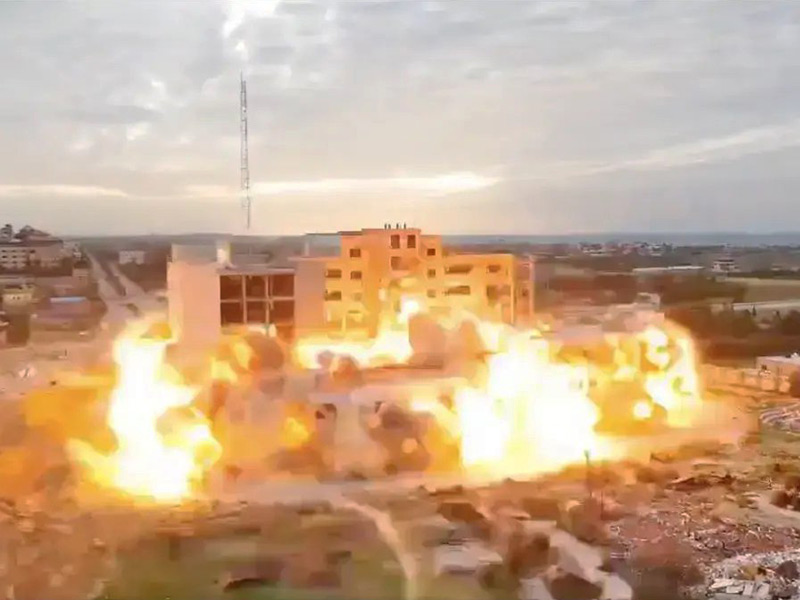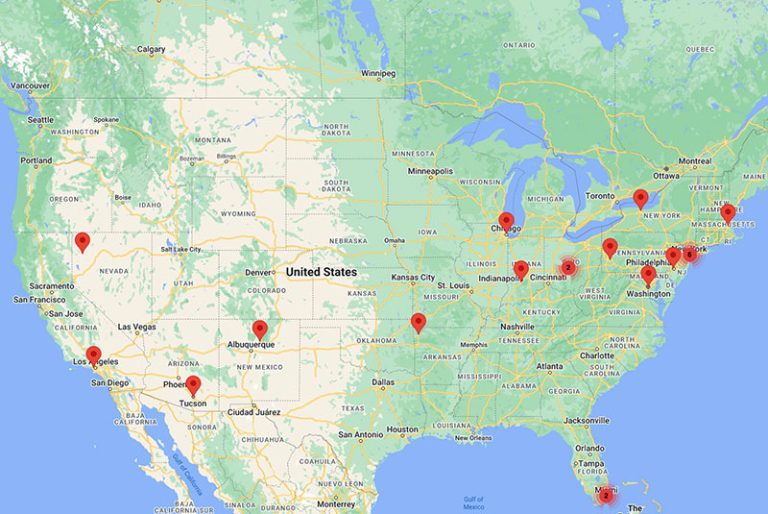Gaza (Palestine). Five months of fighting and bombings have caused more than 30,000 deaths in Gaza, according to Hamas, and ravaged infrastructure. Local heritage does not escape destruction, and it is now subject to the risk of pillaging with the collapse of the administration. Two recent events have stirred up social networks and the archaeological community, forcing the Israeli Antiquities Authority (IAA) and the armed forces to justify themselves: it is in fact most often Israeli soldiers who have published videos or tweets concerning Gazan heritage. According to the Hamas-led Gaza government, responsible for the bloody October 7 attack, looting from October 2023 to January 2024 would reach “25 million dollars” (€23 million) and would concern jewelry, valuable objects and archaeological pieces. It is impossible to verify these assertions. However, the reaction of a senior IDF officer at the same time suggests that excesses did indeed take place. According to Israeli media, this officer encouraged soldiers to stop filming themselves during operations in Gaza, and when they occupied buildings.
Suspicions of theft of archaeological objects
It is in this context that the controversy over a Gaza warehouse emerged. A video posted on January 21 on Eli Escusido added a comment talking about a “discovery” extraordinary. The rest of the video showed a set of artifacts on display in the Knesset (Israeli parliament), believed to come from Gaza. Eli Escusido would imply that the contents of the warehouse would also end up in Israel, in violation of the conventions to which the country is a signatory (The Hague Convention of 1954, UNESCO Convention of 1970). Faced with protests from archaeologists in Israel and the Palestinian territories, Eli Escusido deleted his video.
Screenshot from video showing Israeli soldiers in a Gaza warehouse containing archaeological objects.
© Eli Escusido / X
Several questions remain about this warehouse, which the IAA says is rented by the Jerusalem Bible School to house finds from its excavation sites in Gaza. The chief archaeologist of the excavations, Jean-Baptiste Humbert, hesitates to confirm Arts Journal that it is indeed the same warehouse, and adds that it is difficult to verify ” rumors “ and, for now, he tries “to interpret the images” taken from the warehouse. For its part, the IAA declares to Arts Journal that the warehouse is that of the Biblical School, and that no archaeological piece “was not taken on the spot”. The IAA proposed to “move the artifacts to a safe location under the care of the École Biblique” outside Gaza. The latter has not yet given authorization for the transfer.
On the Palestinian side, the Minister of Tourism and Antiquities of the Palestinian Authority issued a statement on the incident, denouncing “a violation of heritage and international conventions”even speaking of a “aggression against Palestinian heritage”. This ministry had set up a committee responsible for monitoring attacks on heritage in Gaza in January, and several Palestinian heritage conservationists had launched an appeal for help to UNESCO, motivated by another event: the destruction of the museum from the University of Al-Israa in the center of the Gaza Strip (see ill.). According to the X account of Bir Zeit University (West Bank), the Israeli army dynamited the building which housed the museum’s collections on January 18, after having occupied the campus since the beginning of November. Al-Israa deputy director Ahmad Al Husseina told Palestinian media that the museum’s collection “more than 3,000 pieces, including several dating back to the Roman period”. To this day, he does not know where the collection is, but suspects the Israeli army took it away before destroying the museum.
The IAA refuses to comment on this incident and simply refers the press to the Ministry of Defense, recalling that “Israeli law on antiquities does not apply to Gaza which is under Hamas control” and “the authority of the IAA therefore does not extend to this territory”.
A history against
If these events have caused so much media noise, it is also thanks to the Israeli NGO Emek Shaveh which scrutinizes, on social networks and in the field, attacks on heritage, in Israel and in the Palestinian territories. Made up of archaeologists and volunteers from both sides of the border, Emek Shaveh closely followed the warehouse affair and forced the IAA to make a public statement. The NGO’s latest publications suggest that archaeologists are not convinced by these declarations, especially since the Israeli authorities have a history concerning the heritage of Gaza: Emek Shaveh and Palestinian archaeologists regularly recall that, during the occupation of the Gaza Strip between 1967 and 1993 (or 2005 if we take into account the final withdrawal of Israeli troops), Israel searched numerous sites and removed the discovered pieces without authorization. The longer the current conflict continues, the more the communication war around heritage will strengthen.







